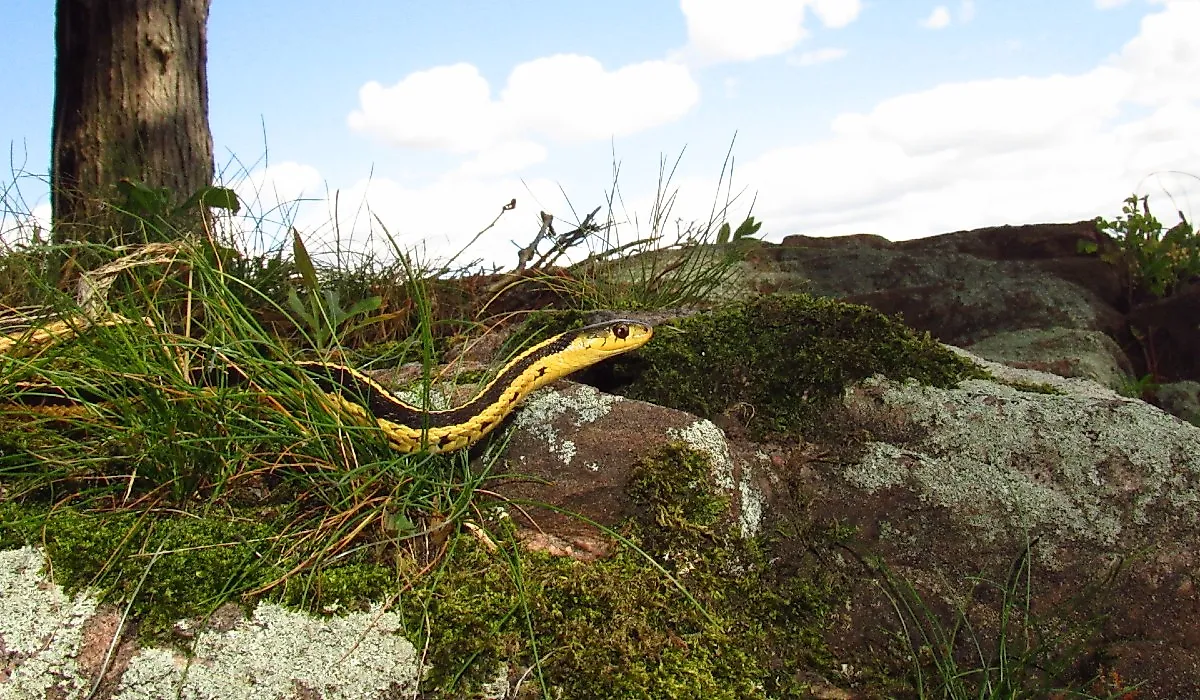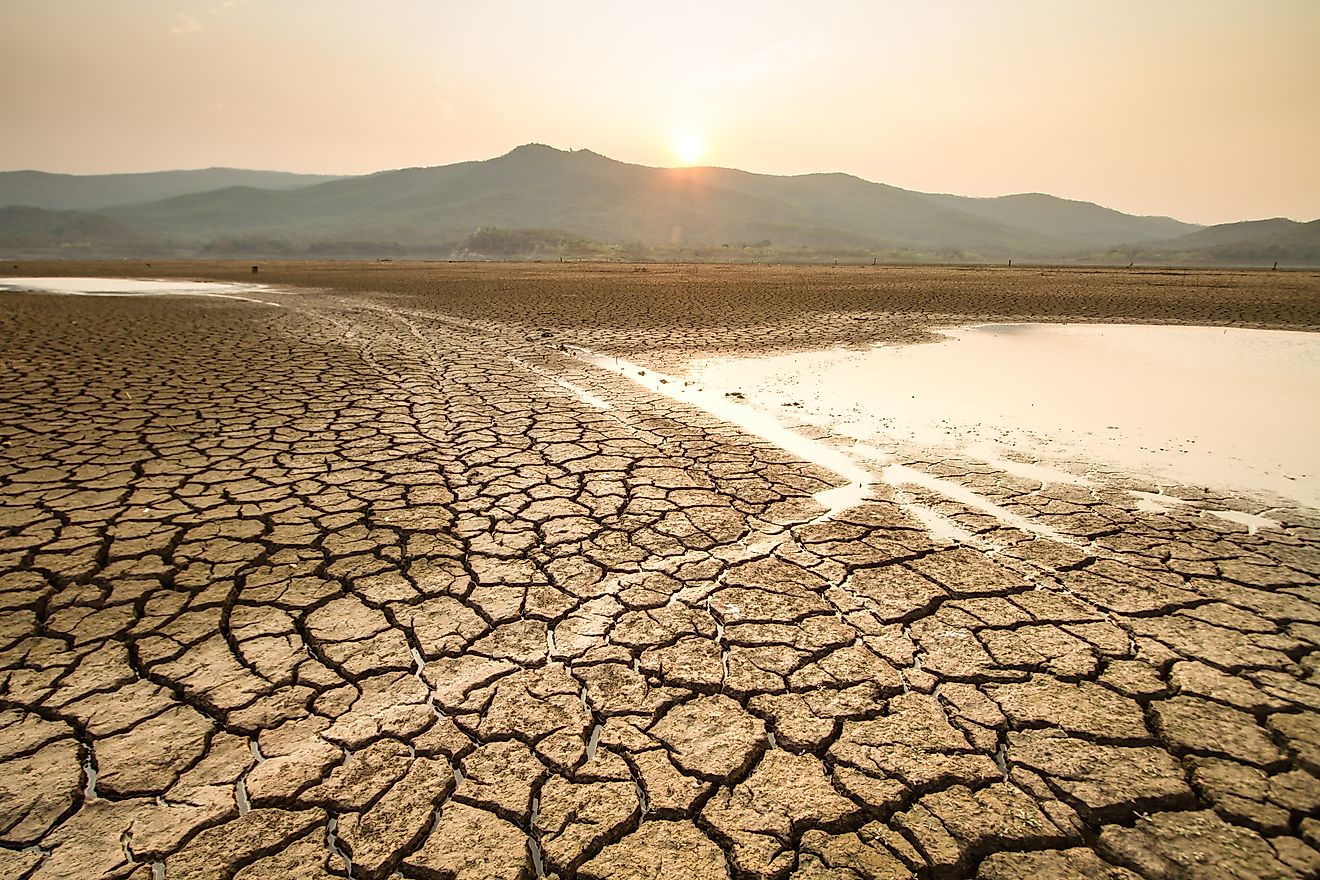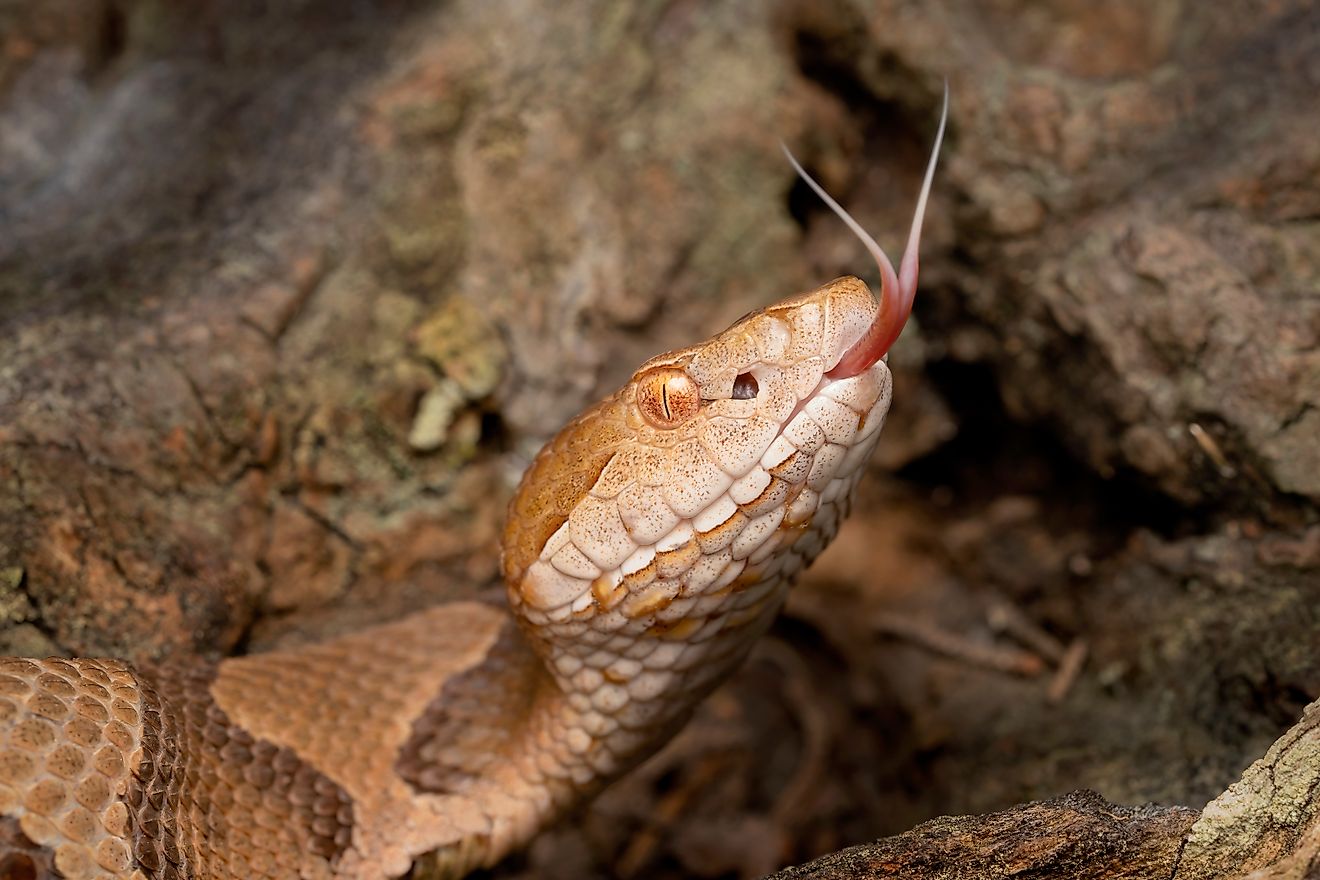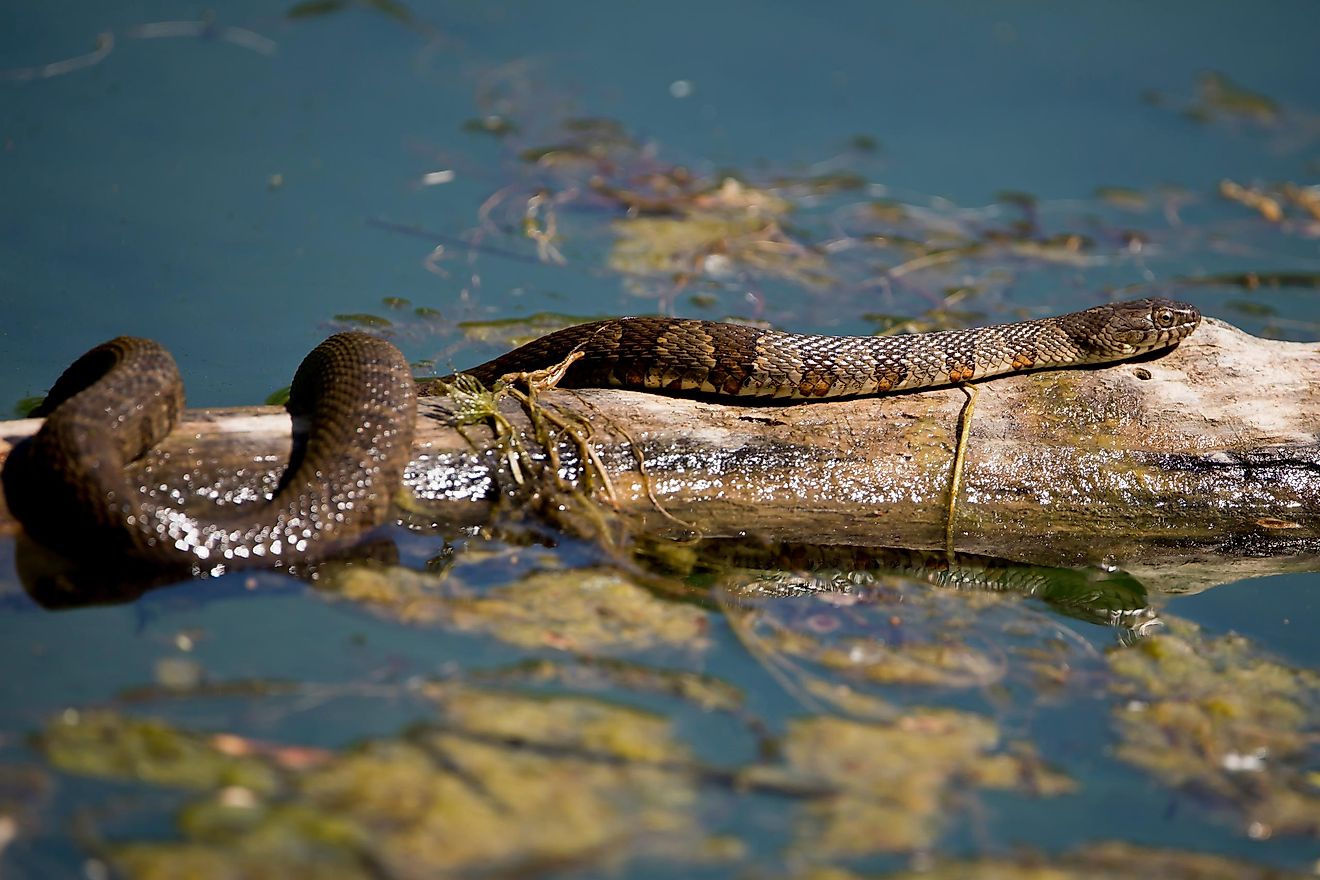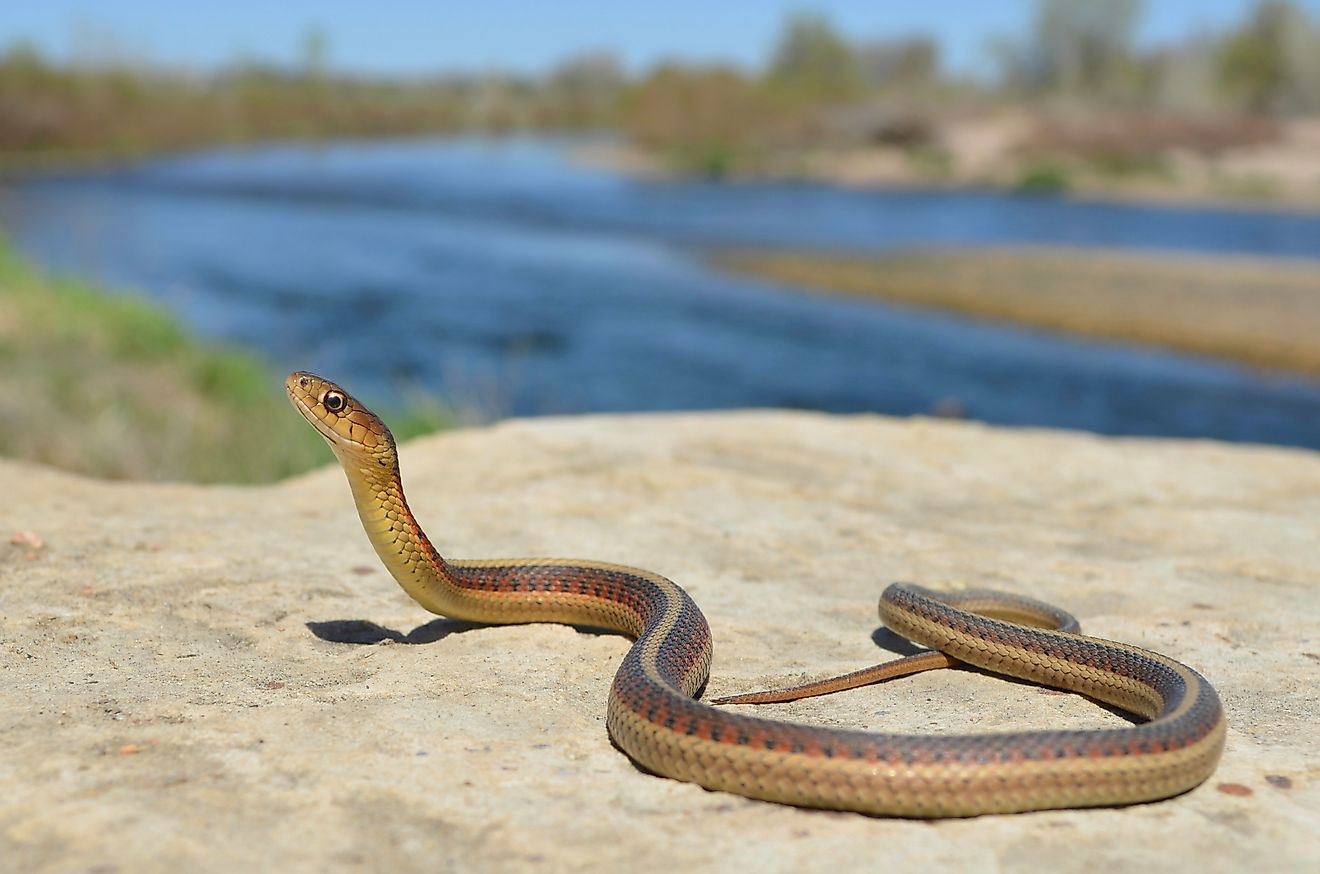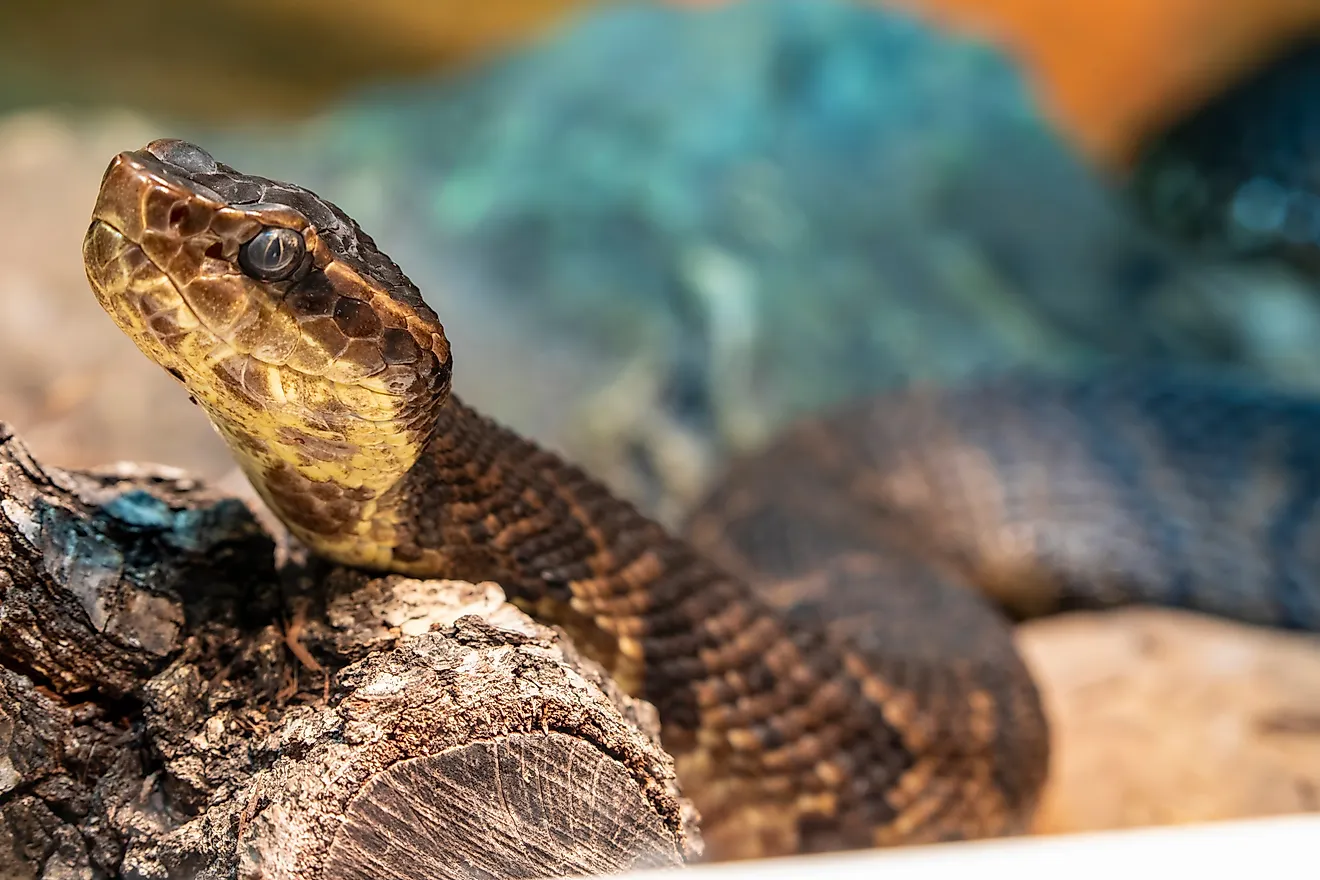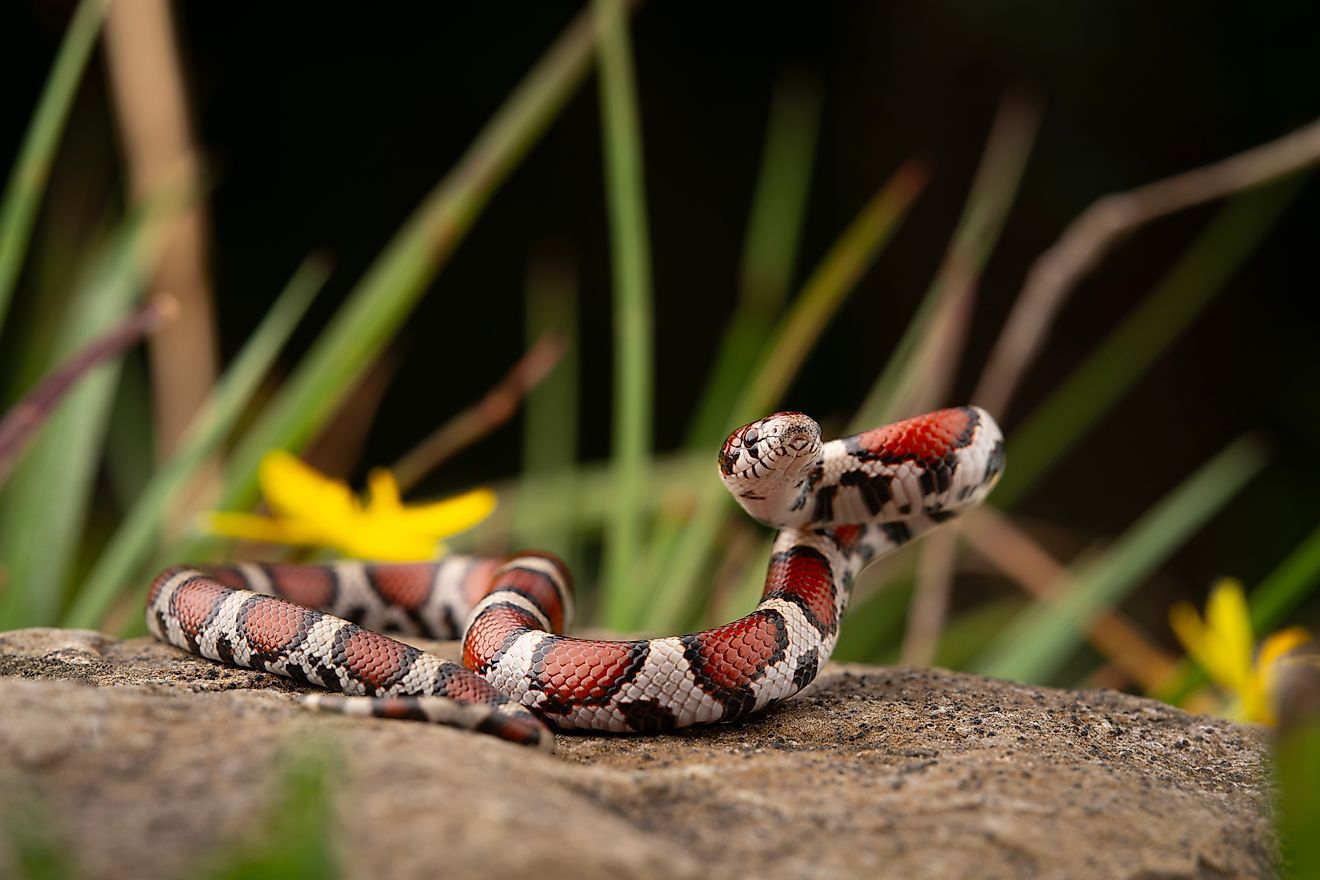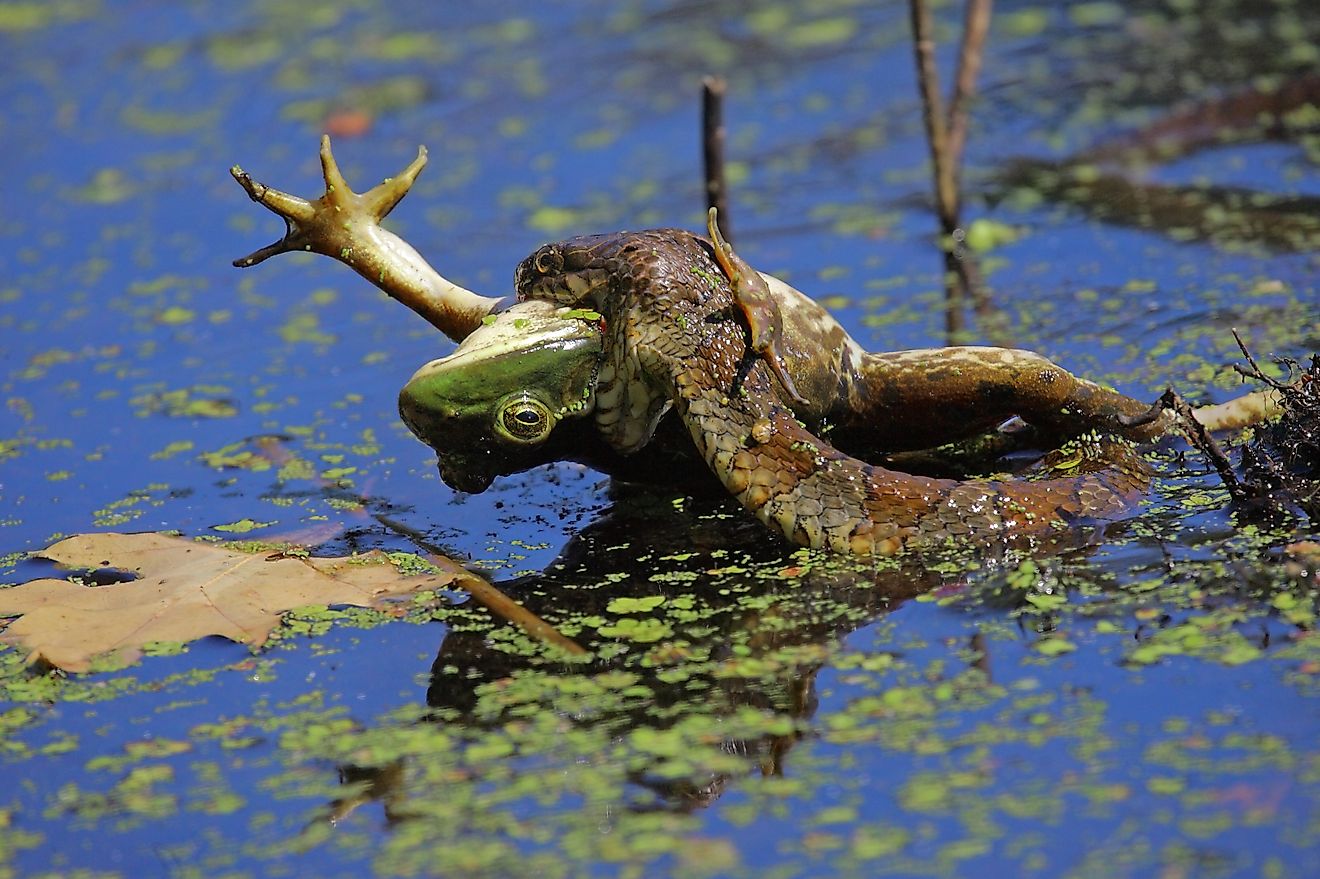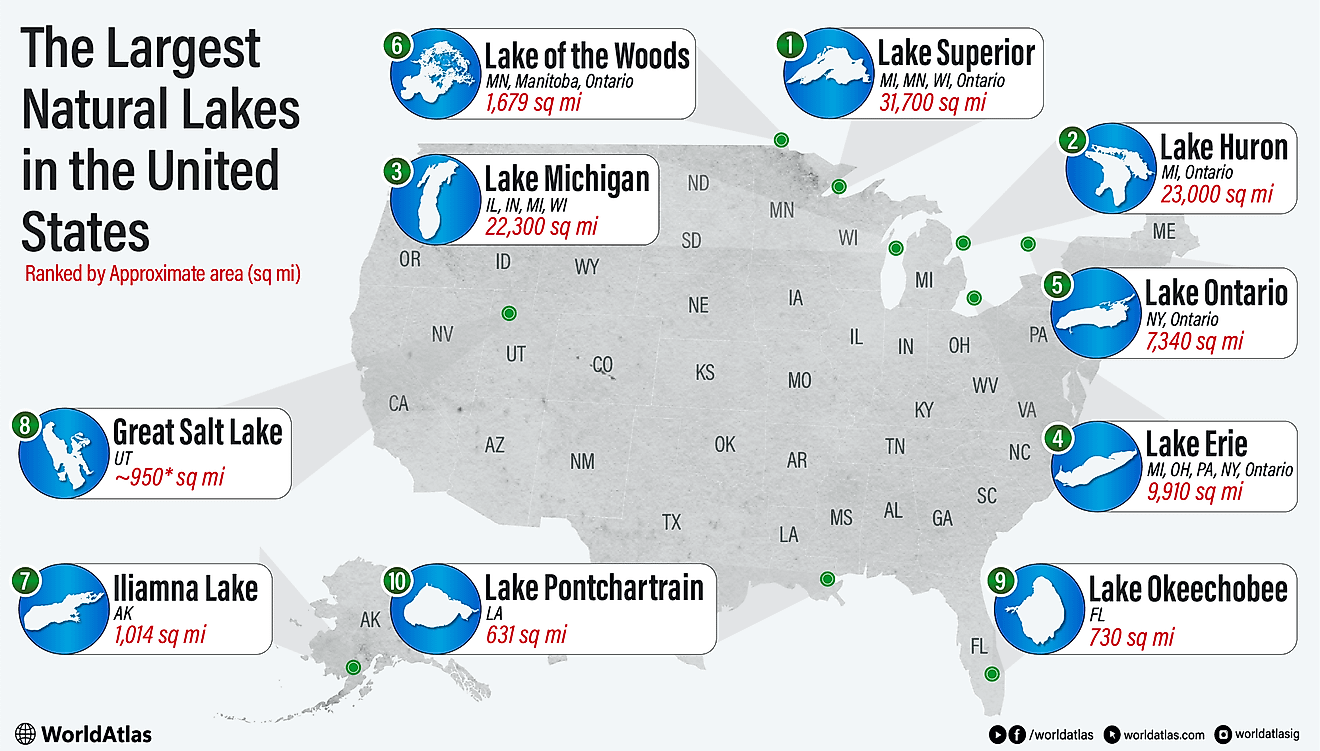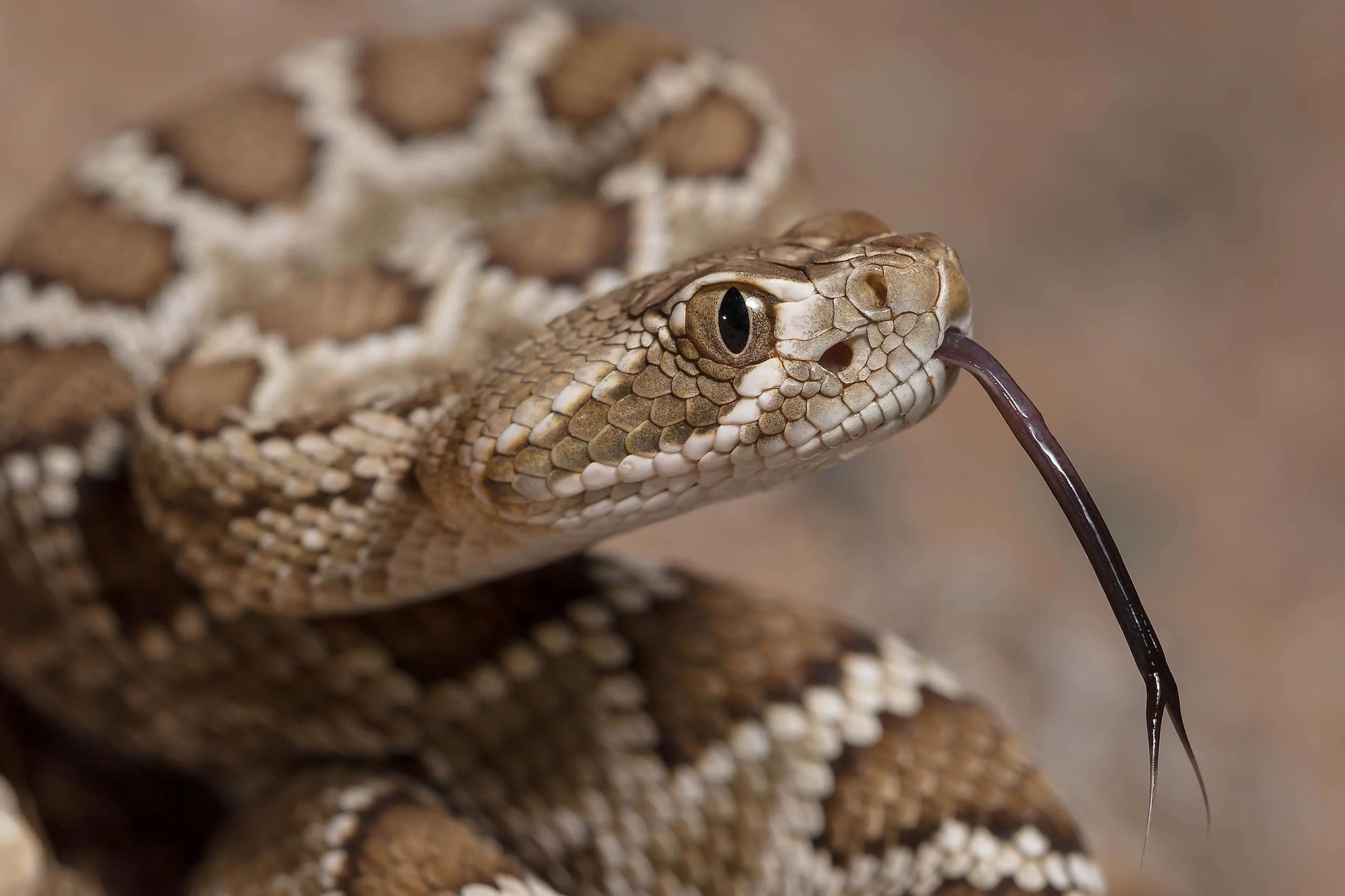
5 Most Snake-Filled Bodies Of Water In Nevada
When thinking of Nevada, the first thing that probably comes to mind is the casino lights of Las Vegas and the massive expanse of desert around it. While these things stand out, many overlook the scenic bodies of water that are spread across the seventh-largest state’s area. From the flowing Carson River in northwestern Nevada to Lake Tahoe, the largest alpine lake on the continent, the waters abound with opportunities. Whether boating, kayaking, fishing, or even camping along the coast, people can spend hours or even days in and around the water.
That said, along with people, animals are also abundant near water, as it is an ideal source of hydration and great for habitats. While bears and coyotes are easy to spot, ssslithering snakes are another story. These small reptiles can hide under debris and move quickly along the ground, often going unnoticed. Moreover, as Nevada is home to over two dozen snake species, with five venomous ones, knowing where one lives is essential. Thus, this article delves into the five most snake-filled bodies of water in the Silver State, with details on these majestic reptiles.
Carson River
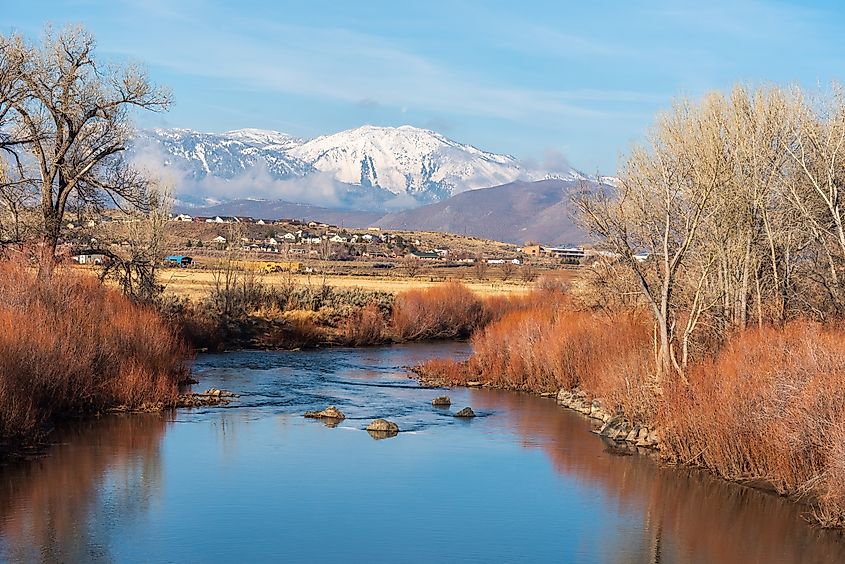
Located in the northwestern part of the state, the Carson River originates in California's Sierra Nevadas and flows through the entire state of Nevada. The river is known for its hot springs amidst the Sierras, creating a thriving environment for all sorts of life. Tourists in the area can spend time fishing for one of many species, such as rainbow trout, bass, and catfish, as well as native Lahontan cutthroat.
With its diverse range of wildlife, the Carson River is also a hot spot for snakes in Nevada. Across its length, species like the northern rubber boa (Charina bottae), common garter snake (Thamnophis sirtalis), and the gopher snake (Pituophis catenifer) can all be found. The Great Basin gopher snake (Pituophis catenifer deserticola) is one of the more unique names, found throughout Nevada and in nearby states. It can reach a length of up to 5.75 feet (175 cm) and is known for its yellow-brown coloration with dark brown dorsal spots. These snakes are adept at climbing, swimming, and burrowing, so they thrive in and around the Carson River and Carson City waters. If you get near one, they will shake their tail to imitate a rattlesnake, but these snakes are non-venomous, as are most species along the river.
Lake Tahoe

There is one lake that stands out amidst the desert expanse of Nevada, and that is Lake Tahoe. This freshwater lake spans 191 square miles (490 sq km) between California and Nevada, making it the largest alpine lake in North America and just behind the Great Lakes in volume. Moreover, as the second deepest lake in the country, it is perfect for many unique activities like scuba diving, with steep drop-offs and cliffs. Along the 71-mile (114 km) long shoreline, there is always something happening, whether it is skiing at Palisades Tahoe, partying in South Lake Tahoe, or hiking along the Tahoe Rim Trail. With so much to see and do, people are always in and around this scenic body of water.
When in or near Lake Tahoe, knowing which snakes to look out for can save you from a venomous bite. This is because the lake is home to the venomous Northern Pacific rattlesnake (Crotalus oreganus). This pit viper reaches an average length of 39 inches (100 cm) and lives under debris, mating in burrows and dense bushes. Rattlesnake sightings and incidents are very rare in and around Lake Tahoe, however, and these snakes won’t actively try to bite people, though their venom is hemorrhagic, leading to bleeding and tissue damage if encountered. Otherwise, garter snakes and the northern rubber boa also live here.
Lake Mead

Split between Nevada and Arizona, Lake Mead is a manmade body of water formed by the Hoover Dam in the 1930s. Today, it is the largest reservoir in the United States in terms of water capacity. Since its formation, the area has developed as a wildlife hub, with the creation of spaces like the Lake Mead National Recreation Area and over 1,400 species of plants and animals. For example, the largemouth bass, relict leopard frog, and desert tortoise all live here.
Apart from these animals, snakes are just as common along the shoreline. The Lake Mead National Recreation Area itself is home to four species of rattlesnakes, including the western diamondback (Crotalus atrox), Mohave rattlesnake (Crotalus scutulatus), sidewinder (Crotalus cerastes), and southwestern speckled rattlesnake (Crotalus mitchellii pyrrhus). The Mohave rattlesnake is one of the most prominent and is found throughout parts of the southwestern United States and Mexico. The snake prefers sparsely vegetated areas, so it's not as likely to jump out at you from under a rock or log. The average male can reach a length of up to 4 feet (124 cm) and features a brownish coloration with dark rings and dorsal “diamond” shaped patches that allow it to camouflage well in the desert landscape. To this end, it is essential to be aware when hiking, as a bite from this species can be fatal in extreme cases.
If you know which snakes to steer clear of, a visit to Lake Mead is sure to be fun thanks to the array of activities. Backcountry roads open up exploration opportunities on land, while marinas are ideal for heading out onto the water. For a quieter experience, canoeing, camping, and fishing are just a few ways to take in the expansive shoreline of this snake-filled lake.
Lake Mohave
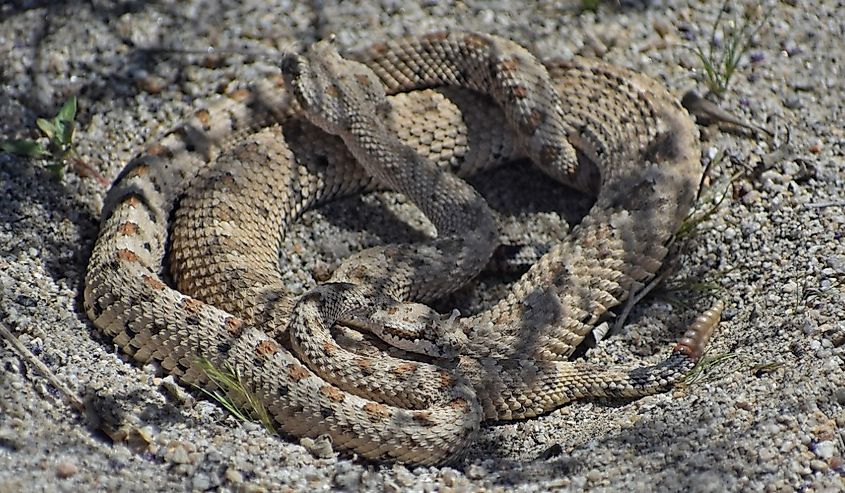
Lake Mohave is another reservoir, although much smaller than Lake Mead. Spanning 26,500 acres, these two lakes are connected, and Lake Mohave lies to the south of its larger counterpart. To this end, most of the same snake species call this lake home, including the various rattlesnakes. Here, the sidewinder rattlesnake is one you might encounter; however, they aren’t as scary as they seem. These snakes are smaller than most rattlesnakes, reaching between 17 and 31.5 inches (43 and 80 cm), meaning they also pack a smaller punch. They actually have smaller glands and weaker venom than most rattlers, and fatalities are rare, with symptoms often limited to pain, swelling, and bruising. That said, their light brown color pattern and keeled dorsal scales allow them to blend in with desert terrain, so they can often go unnoticed until you are too close.
Given that camouflage can be an advantage for snakes, staying on designated trails allows tourists to avoid unnecessary encounters and bites. Speaking of trails, Lake Mohave abounds with hiking opportunities, with notable routes like the Arizona Hot Springs Trail and Fisherman’s Trail. The former is ideal for a full day out, cutting through the White Rock Canyon Trail with a challenging elevation change of 750 feet. Back in the lake, swimming, boating, skiing, and scuba diving are among the many recreational opportunities.
Walker Lake
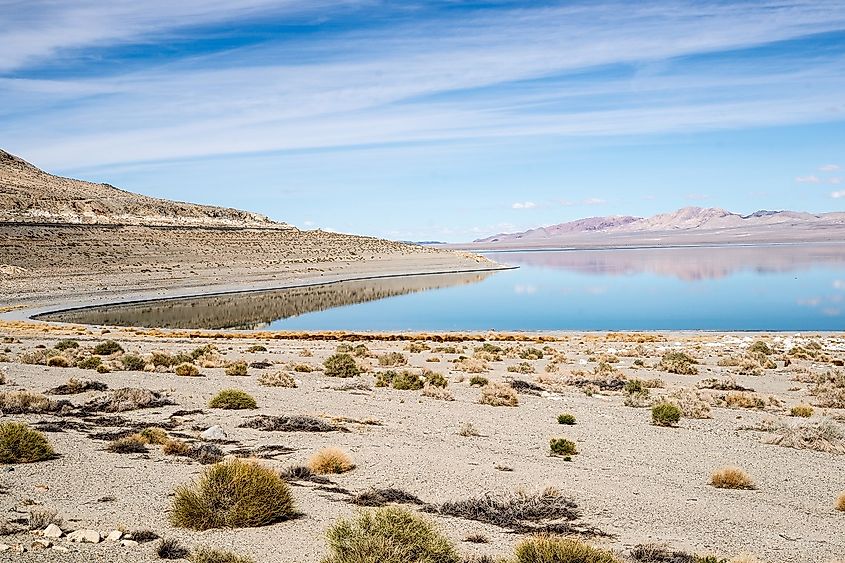
Located in western Nevada near Hawthorne, Walker Lake is a large natural lake that can cover up to 50 square miles (130 sq km) and serves as a striking example of the state’s inland basins. The waters attract anglers searching for Lahontan cutthroat trout and outdoor enthusiasts who enjoy boating or camping along its quiet shoreline. Towering desert mountains surround the basin, creating a rugged backdrop that highlights the lake’s unique topography.
Among the many reptiles that live here, the Great Basin rattlesnake (Crotalus oreganus lutosus) is one of the most notable. This venomous pit viper is well adapted to the rocky slopes and sparse vegetation near Walker Lake. Adults typically reach lengths of 3 to 4 feet (90 to 120 cm) and display a gray or light brown body with dark blotches, making them blend easily into the terrain. Though generally shy, the Great Basin rattlesnake will defend itself if threatened, and its potent venom can cause serious harm. Visitors are advised to stay alert when hiking near the lake’s edges or venturing into the surrounding desert, where these snakes often hunt for small mammals and birds. Apart from the rattler, the striped whipsnake (Masticophis taeniatus), gopher snake, and California kingsnake (Lampropeltis californiae) also live in the vicinity of Walker Lake.
Watch For Snakes In Nevada’s Waters
Nevada may be known for its deserts and neon lights, but its rivers, lakes, and wetlands tell a different story - one filled with wildlife, adventure, and cautionary tales. From the Carson River’s gopher snakes to Lake Tahoe’s rattlers and the diversity of Lakes Mead and Mohave, the Silver State’s waters are prime habitats for these reptiles. While most species are harmless, some pack potent venom, making awareness essential. Whether you’re fishing, boating, or hiking, knowing what snakes live nearby ensures you enjoy Nevada’s scenic waters safely.
